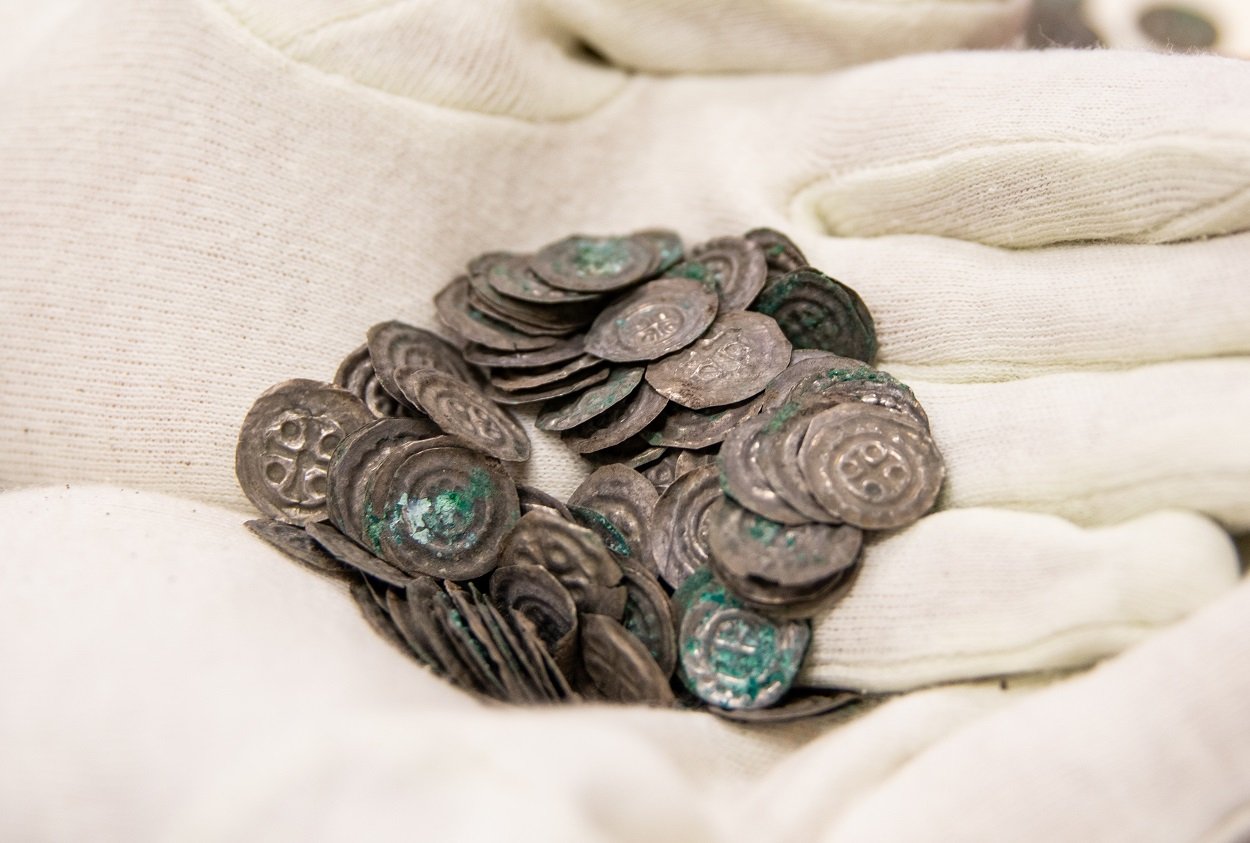Archaeologists from the Jönköping County Museum have announced the discovery of a silver coin hoard on the Swedish island of Visingsö.
Visingsö is located in the southern half of Lake Vättern, which during the 12th and 13th century was the seat of the Swedish monarchy.
Four Swedish kings are known to be buried on the island, which includes: Karl Sverkersson, Erik Knutsson, Johan Sverkersson, and Magnus Ladulås.
The discovery was made at Brahe Church, a 17th century church in the Renaissance and Baroque style, which was built on the remains of an earlier 12th century church known as the Sträja church.
Excavations uncovered the remains of two burials which were exhumed during works for the installation of a new heating system. Only the lower halves of their bodies remained, one of which has been identified as a man aged between 20 and 25 years old.
Subsequent inspection led the team to uncover a deposit of 170 silver coins dating back to the 12th century.
According to a press announcement by the Jönköping County Museum, the coins are of the bracteate type from between 1150 to 1180, a regional coinage mainly minted in German-speaking in Saxony and Thuringia.
Bracteates were a typical “regional penny” currency made from thin silver sheet that come in three denominations, a two-pfennig (Blaffert) with an elaborate image, a one-pfennig (Hohlpfennig) with a coarse image, and hollow coins worth half a pfennig.
“It is rare that finds are made in Christian graves, that custom belongs to prehistoric times and that makes the Visingsö find very special,” said a representative from the Jönköping County Museum.
Header Image Credit : Jönköping County Museum
Sources : Jönköping County Museum





